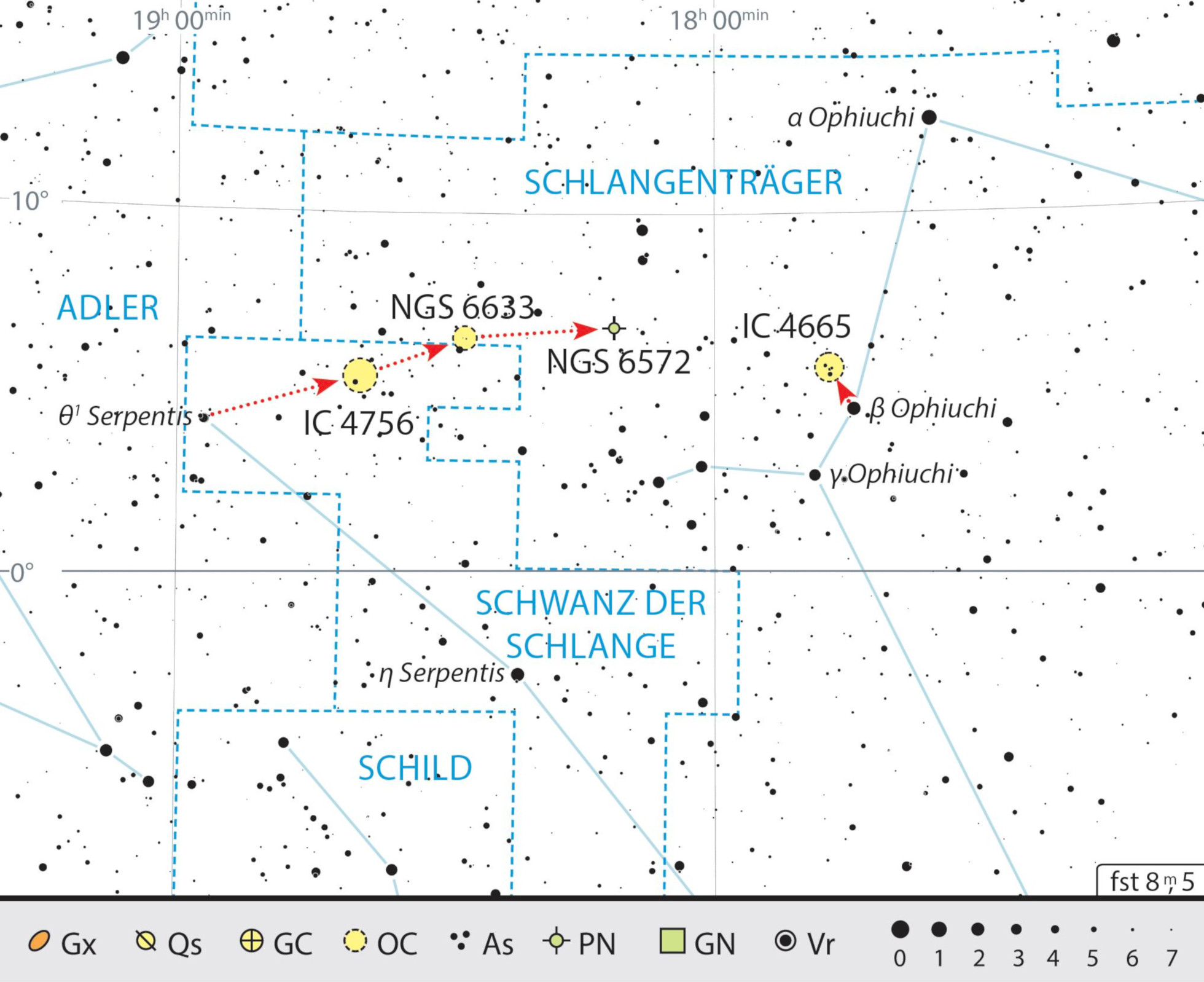The serpent bearer’s treasure chest
Besides many Messier globular clusters, this constellation also offers a number of beautiful open clusters for binoculars.
 NGC 6633 captivates with its many stars of similar brightness. Herbert Walter / CCD Guide
NGC 6633 captivates with its many stars of similar brightness. Herbert Walter / CCD GuideThe huge constellation Ophiuchus, or serpent bearer, is known primarily for its Messier globular clusters, but it has a number of jewels for binoculars at its eastern edge. No wonder, because here the constellation grazes the shimmering band of the summer Milky Way.
In the border area
NGC 6633, a striking open cluster, is to be found in the north-east corner of Ophiuchus. Since there are no brighter stars nearby, you have to start star-hopping from θ Serpentis. A pan of around 7.5° in a north-westerly direction brings you, after 4.5°, to open cluster IC 4756, which is also still in the constellation of Serpens. IC 4756 consists of five magnitude 6 stars forming a trapezium, bustling with many fainter stars in between. NGC 6633, on the other hand, appears to be much more tightly packed: within 0.5° there are around 30 stars of magnitude 7 to 9. The cluster appears elongated.
A star that's no longer a star
If you continue to pan between the two clusters another 4.5° further west, you will encounter a group of four magnitude 7 stars arranged in a zigzag shape. Exactly 1° east of this is a faint magnitude 8 speck. Nothing special? Just another star? Not at all, this is planetary nebula NGC 6572. Due to its small size, you don’t get any impression of its form in binoculars, but with careful observation it may be possible to make out its green colour.
Further beautiful objects
If we start from Cebalrai or β Oph and head just 1-2° north, we come across another large open cluster: IC 4665. Even in small binoculars you will be able to count up to 25 stars in an area of around one square degree, they are more concentrated in the core area which is around the size of a full Moon.
If you head away from IC 4665 to the north towards Ophiuchus’ brightest star Rasalhague or α Oph, about halfway along you will find the brightest object along this path, namely magnitude 6 star 53 Oph. It has a fainter companion 41” distant, which becomes visible with closer observation. A tripod or at least the support of your arms on a chair back or a car roof helps enormously with its detection. After finding these destinations, you should continue to explore with your binoculars, because Ophiuchus has many other great objects for small optics.
 There are many great targets for binoculars in the north-eastern corner of Ophiuchus. J. Scholten
There are many great targets for binoculars in the north-eastern corner of Ophiuchus. J. ScholtenAuthor: Kay Hempel / Licence: Oculum-Verlag GmbH
